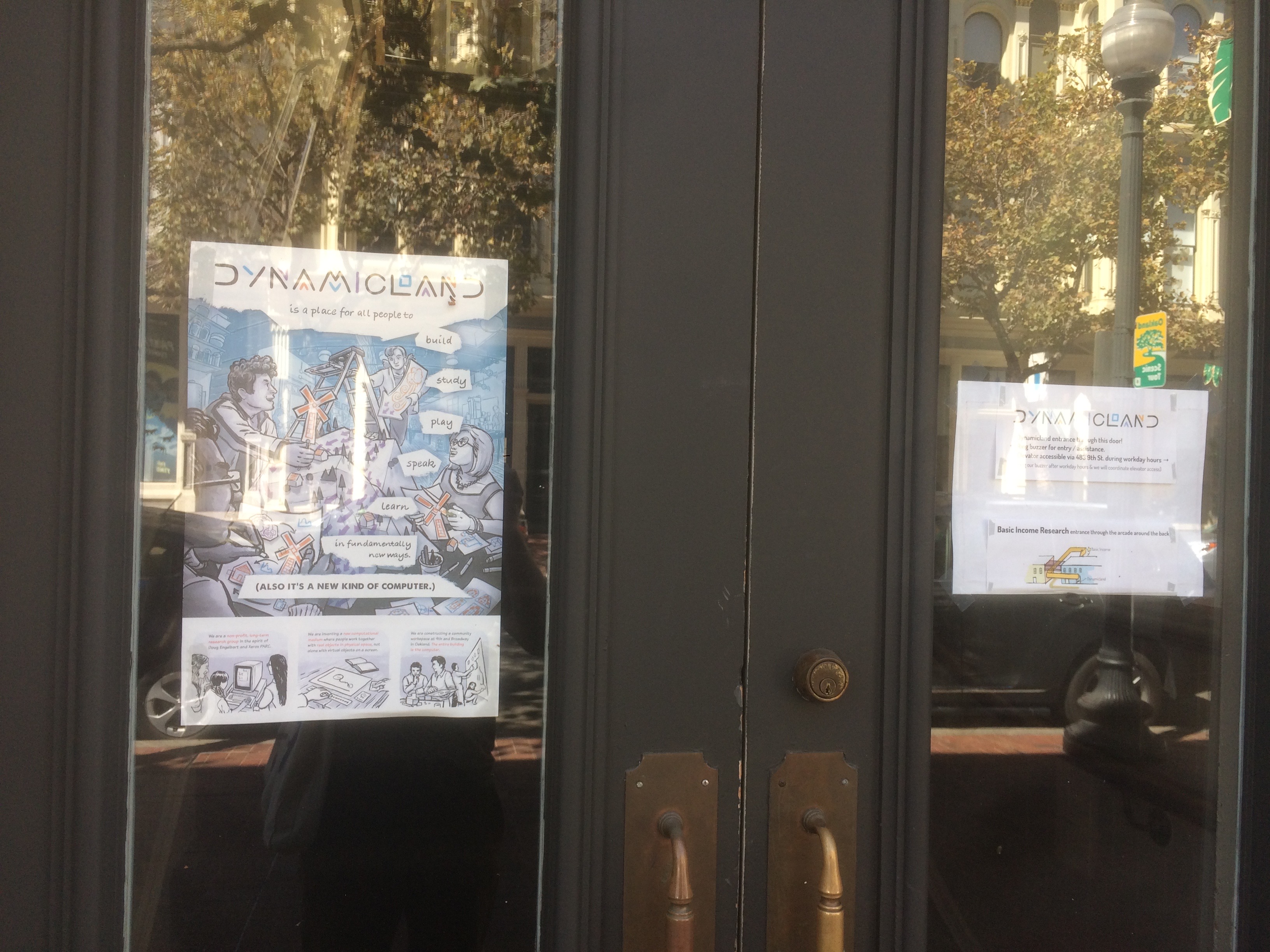I went to San Francisco for a work conference, staying for the weekend.
I was not quite sure what to expect. A lot of the narrarative around SF right now is silicon valley dystopic - clueless tech bros, whitewashing the city with their undeserved success, shifting the local culture and ruining the world with addicting, privacy and social institution shredding yet somehow irresistable technology.
COMPASS was fantastic. Unlike other conferences I’ve been to it was laser focused on one topic over two days.
The city was also enjoyable, and overcame my worst fear that I would be embarassed to find myself no different from any of the aforementioned ‘techbros’.

The highlight of my trip was a fortuitous stop at an experimental computer lab called “Dynamicland”. It has caught my eye a few times in the past year, enough to have put the thought in the back of my brain that if I ever got to SF I needed to check this place out. Through happenstance I met someone at the conference who knew a volunteer researcher there who was able to welcome and show me the ropes.
I met some friends in a nearby east-of-the-bay town at a winery staring back across at the big city, which I think was coincidentally sited on the old airfield featured in Robin Sloan’s Sourdough…
Back to Dynamicland, which might be the future we have all been waiting for. Dynamicland proposes a world where computers are at the same time completely hidden while also being pervasive and interacting on every surface. Or at least all the flat surfaces.
They do this by mounting all the hardware in the ceiling: a computer, a projector, and a camera. The camera observes what is happening on the the surface receiving the projections and being observed by the camera and acted upon by the ‘OS’.
What I can’t even begin to explain here is that all ‘computation’ is embedded in physical sheets of paper, which both serve as the ‘display’ and programmatic definition. A founding principal is that everything should be self-explaining and approachable by anyone, not locked away behind syntax and compilers, evident only to the cognoscenti.
Pages defining programs are physically there on the table, interpreted by the system in the ceiling but viscerally manipulated by what’s happening below. Here’s a video of a binder of “cool wallpapers”: to get to the next wallpaper you flip over a new page, which the camera reads in real time and it switches from running the code from the old page and brings up the behavior defined by the new page:
This results in programming as an activity that to me felt very similar to being in a puzzle room: collaborating towards some shared common goal, but interacting fully in a physical space instead of as a set of individuals hunched over a keyboard staring at disjointed screens. At one point someone needed a particular card, so I ran into the other room to find it, returning a few minutes later to set it on the table, fixing a problem and moving the moment along.
In the future the hardware and software will be built into self-connecting light bulbs installed seamlessly everywhere, yielding a computable canvas shared by all.

Highlight #2 was renting a dockless e-bike on Sunday and crusing all over. I’m comfortable on a regular bike in most traffic, and found the roads in the northwest part of the city fairly navigable and the drivers no more petulant than on my home turf. The bike kicked me straight up 10 blocks of the steepest hill I think I’ve ever dared to ride up returning towards downtown from the Presidio and I don’t think I even broke a sweat.
So that’s two things I got to see for the first time that are rising up on the future of the world. Before this trip, I was last in SF about 10 years ago - 2008 I think - for WWDC around the time that smartphones and Twitter were moving quickly along their own uptake/adoption curve. People coordinated all their conference activity on twitter using the new-fangled handheld pocket computer. 10 years later iPhones and Twitter have shifted culture in an at-that-time unforsee-able way.
I’m more optimistic for what these two technologies will bring ten years from now. I hope it’s a world where I and everyone can ride an e-bike through a city where the streets are all augmented by Dynamicland streetlights, providing seamless “in the world” (vs. “on the screen”) computational cues.
[1] I believe I found the first brief glimpses via Bret Victor’s @worrydream, one of the leaders behind @Dynamicland1. More info came from @rsnous, who I followed surreptitously after seeing a mention of his screenshot app somewhere.
A few more bits -
- Notes from Dynamicland: Geokit @rsnous sets out to explain what is actually going on by elucidating a project that does maps
- Indistinguishable from Magic “Dynamicland seeks to free us from our devices—through technology”
- A thread on twitter showing some of how the interactions work this has good video evidence of how “pushing paper” is actually programming in DL